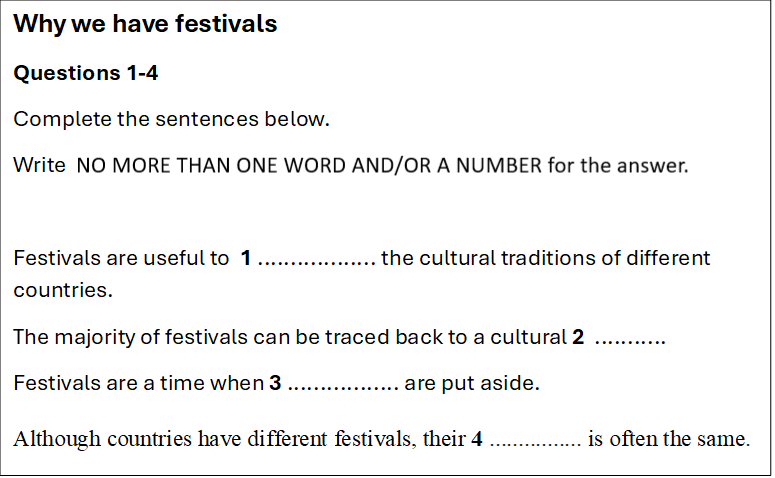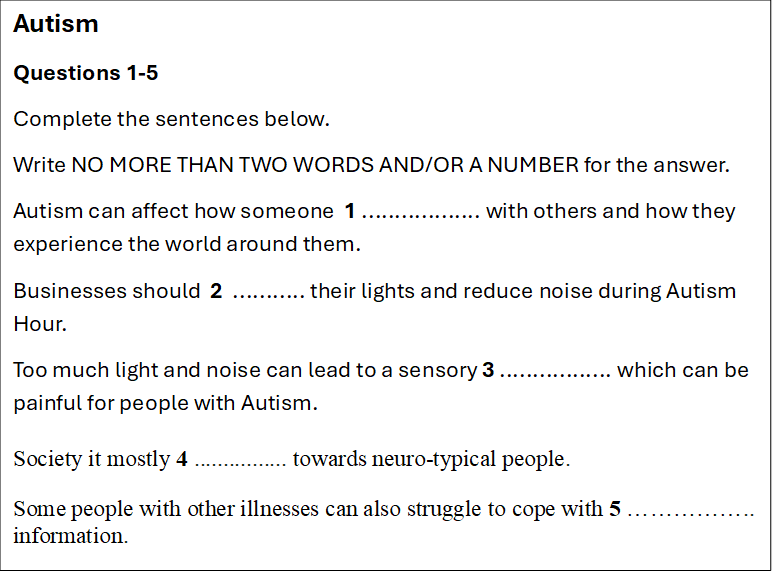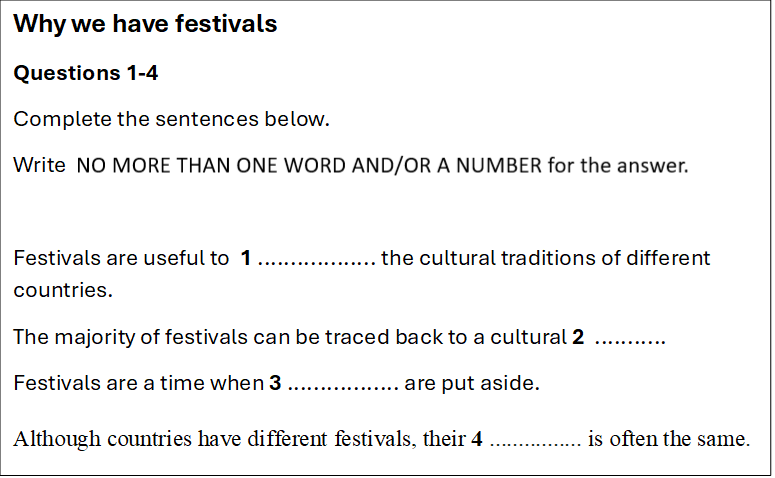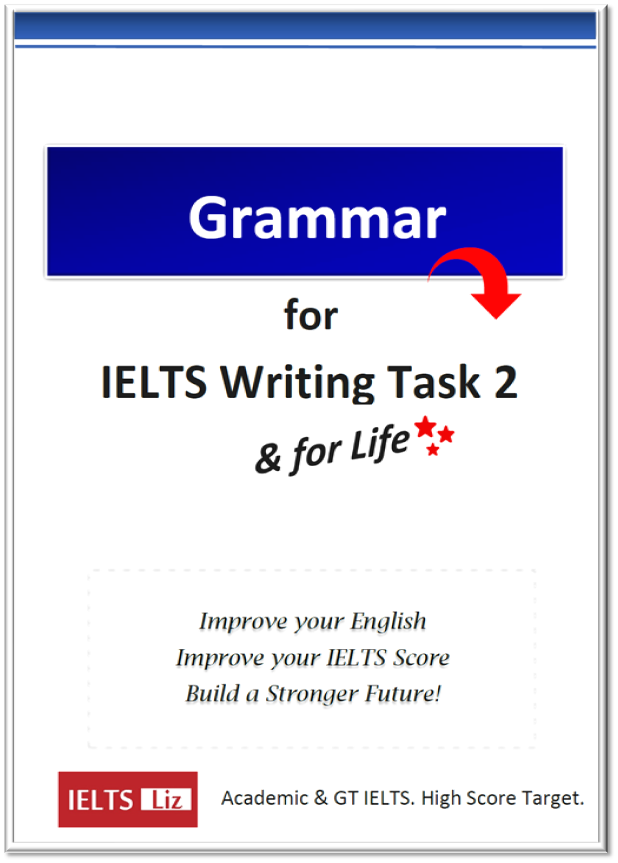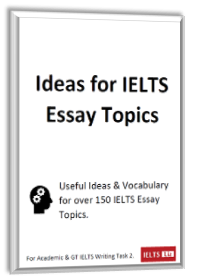It is possible to get a multiple choice question in all sections of IELTS listening. The exercise below is based on section 2, which means it’s one speaker talking on a social topic. Make sure you read through each question and check the options possible before you start listening.
Multiple Choice Questions for IELTS Listening
Dashford Study Center
Questions 1-4: Choose the correct letter A, B or C.
1. Membership at the study center is 20 pounds
A. for everyone.
B. for everyone except the elderly and students.
C. for everyone each year.2. Members are able to take out
A. an unlimited amount of books.
B. a maximum of 3 books.
C. 3 books for 3 days.3. Booking is unnecessary for
A. the yoga, dance and gentle exercise classes.
B. general fitness classes.
C. the walking class.4. Arts and crafts classes are taught by
A. volunteers.
B. teachers.
C. teachers and volunteers.
Transcript & Answers
Below you can click to reveal the transcript and answers for this lesson.
TranscriptThe study center in Dashford was opened to give free educational and recreational services to the community of Dashford. Membership is free for over 65’s as well as for students, as long as they have a student ID. For everyone else it is an annual membership of 20 pounds.
Members are able to enjoy full access to our extensive library. The library comprises of a comprehensive collection of classic literature, resource books, children’s books, history books and popular literature. As members, you are able to borrow up to 3 books at a time for up to 4 days.
Our recreational services extend for both members and non-members. We offer social and leisure activities for all age groups. Our yoga, dance and gentle exercise classes are extremely popular and booking ahead is required to ensure your place on one of these courses. However, our walking group, who meet once a week, offer unlimited places but you do have to have a good level of general fitness. We also have IT classes at beginner, intermediate and advanced levels. But for those of you who are more creative, there are arts and crafts classes which are run by a qualified teacher with volunteer support. Before checking everything why don’t you take a look around and see what you might be interested in.
Common trap – IELTS often give the same words in the multiple choice options and the audio in order to trap you. This question is testing if you know the difference between the words ‘everyone’ and ‘everyone else’. You can also see that IELTS has paraphrased ‘over 65’s’ for ‘the elderly’.
2. B
A maximum of 3 = up to 3. This is a direct paraphrase.
3. C
unlimited places = no need to book
The trap in this question is that the word ‘booking’ was used with the information about yoga, dance and exercise – IELTS often give the same word with the wrong answer.
4. B
This is a test of your vocabulary. The classes are run by teachers = the classes are taught by teachers. The volunteers only support, they do not teach.
Recommended

